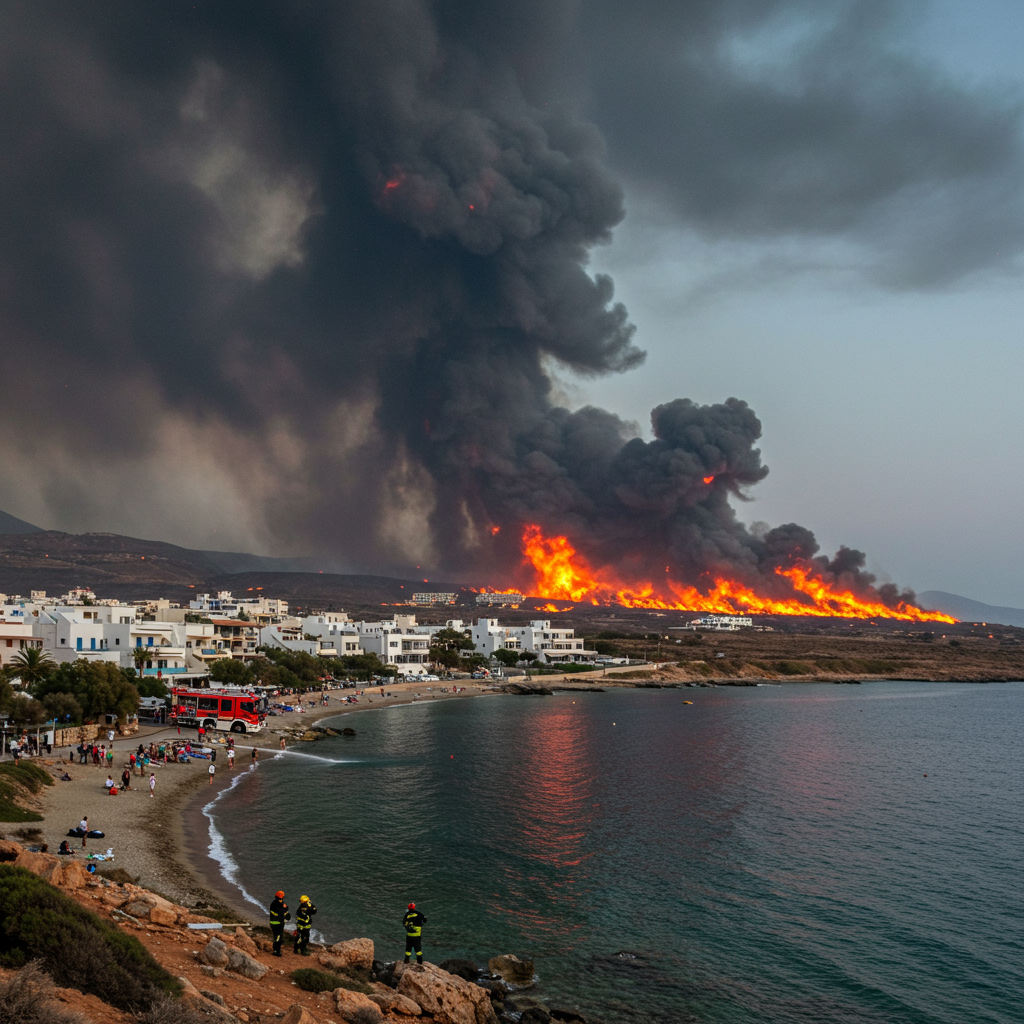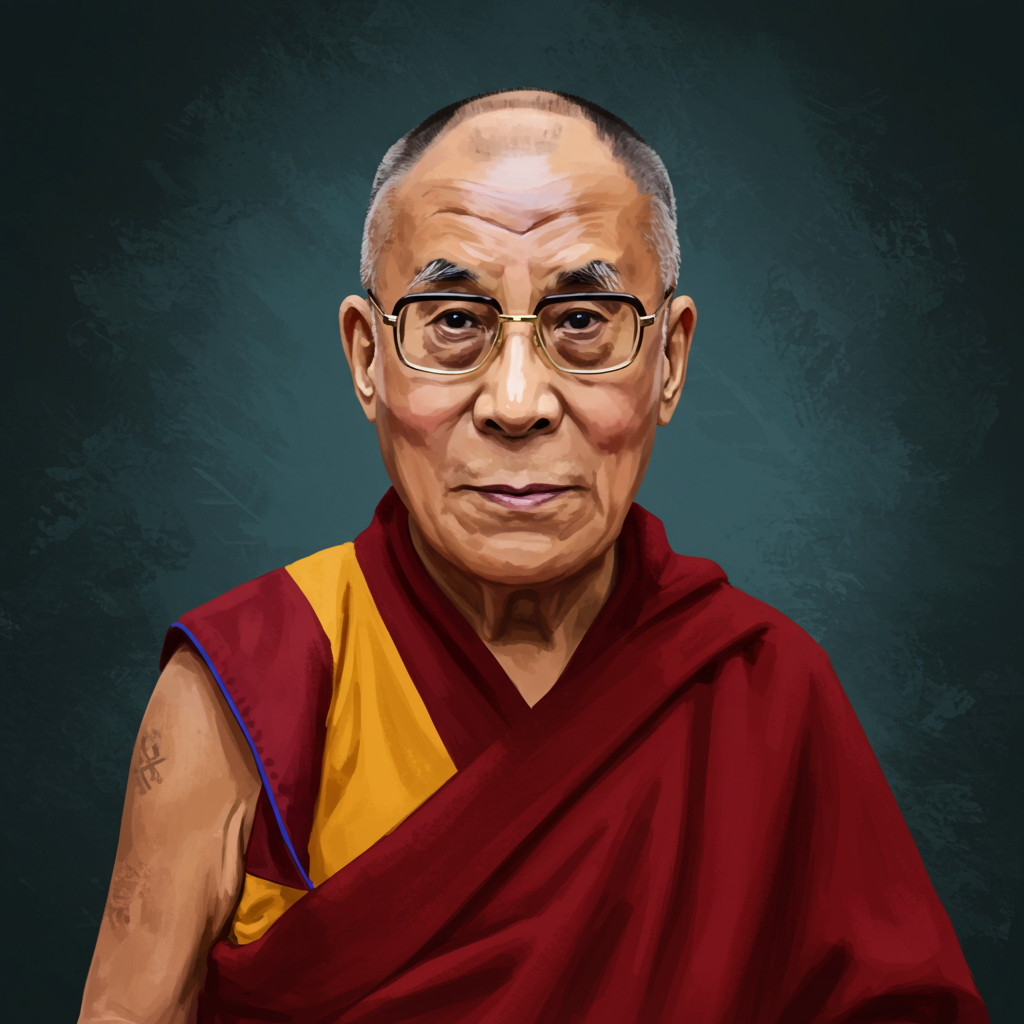A landmark historical moment between two global figures, india‘s first Prime Minister Jawaharlal Nehru and the spiritual leader of Tibet, the Dalai Lama, is gaining renewed attention. As the Dalai Lama recently marked his 90th birthday, a prominent Congress leader highlighted details of their pivotal four-hour conversation held in Mussoorie in 1959. This significant interaction occurred shortly after the Dalai Lama sought refuge in India, a country that would become his home and the base for the tibetan government-in-exile for decades to come. Understanding this meeting provides crucial context for the enduring relationship between India and the Tibetan community.
The Dalai Lama’s Path to Refuge in India
The Dalai Lama’s connection with India predates his permanent exile. He first visited the country between November 1956 and March 1957 for the significant 2500th birth anniversary celebrations of the Buddha. However, circumstances in Tibet deteriorated, leading him to make the momentous decision to seek asylum. His arrival in India marked the beginning of his permanent refuge, formally commencing on March 31, 1959. This marked a turning point not only for the Dalai Lama personally but for the future of the Tibetan people and their cause. India’s decision to grant asylum was a bold move with significant geopolitical implications.
The Crucial Mussoorie Conversation
Just weeks after arriving in India, on April 24, 1959, Jawaharlal Nehru and the Dalai Lama met in Mussoorie. This was no brief courtesy call; their conversation lasted an extraordinary four hours. Such an extended private meeting between the Indian Prime Minister and the newly arrived spiritual leader underscored the gravity of the situation and the depth of the discussions taking place. The meeting was highly exclusive, with only Nehru, the Dalai Lama, India’s Foreign Secretary Subimal Dutt, and interpreters present. The confidentiality surrounding the meeting suggests the sensitive nature of the topics discussed, likely revolving around the situation in Tibet, the Dalai Lama’s future in India, and potentially the broader implications for India-China relations.
The timing of this meeting was critical. It took place during a period of intense regional flux. Tibet’s political status was changing rapidly, and the arrival of the Dalai Lama as a refugee presented India with a complex diplomatic challenge. Providing refuge aligned with India’s humanitarian principles but strained relations with China, which viewed Tibet as an integral part of its territory. The four-hour discussion likely laid the groundwork for India’s policy towards the Dalai Lama and the Tibetan community in exile. It was a foundational dialogue determining the terms and conditions of his stay and India’s support for the Tibetan cause, albeit within the constraints of international diplomacy.
Establishing a Base in India
Following the extensive conversation with Prime Minister Nehru, the Dalai Lama embarked on an extended tour across India. This tour allowed him to familiarize himself with the country that would become his home and connect with supporters and the growing number of Tibetan refugees. The tour was a preparatory phase for establishing a permanent setup. Subsequently, the Dalai Lama’s main establishment was created in Dharamsala, nestled in the Himalayas. Dharamsala quickly became the seat of the Tibetan government-in-exile, officially known as the Central Tibetan Administration.
Over the years, India has provided land and support for numerous Tibetan settlements across the country. These settlements have become vital centers for preserving Tibetan culture, religion, and identity. Notable examples include Bylakuppe in Karnataka, Mundgod also in Karnataka, and Hunsur again in Karnataka. These locations have allowed the Tibetan community to rebuild their lives and institutions outside of their homeland. The establishment and sustainment of these settlements reflect India’s long-standing commitment to supporting the Tibetan diaspora. They serve as thriving hubs of Tibetan life, maintaining traditions and language for future generations.
Reflections and Legacy
The recent recollection of the 1959 meeting comes as the Dalai Lama celebrates his 90th birthday, prompting reflection on his extraordinary life journey and the nearly seven decades he has spent in India. Congress leader Jairam Ramesh highlighted the significance of the meeting and also referenced the Dalai Lama’s recent book, ‘Voice for the Voiceless.’ This book reportedly offers new reflections and revelations on his experiences and struggles. Such personal accounts from the Dalai Lama underscore the challenges and resilience demonstrated by him and the Tibetan community. His continued presence in India and his global advocacy for peace and Tibetan autonomy remain central to the narrative of Tibetan exile.
The Dalai Lama is globally recognized not only as the head of Tibetan Buddhism but also as a significant moral authority and advocate for non-violence. His journey from Tibet to refuge in India and his subsequent international prominence highlight the critical role India played in providing him a safe haven. The 1959 meeting with Nehru was a foundational step in this long and complex history. It solidified India’s position and set the stage for the unique relationship between the host country and the exile community. This historical interaction continues to be a subject of interest for historians and political observers alike, offering insights into the early days of India’s relationship with Tibet and China following the events of 1959.
The discussion between Nehru and the Dalai Lama holds particular importance for understanding India’s delicate balancing act between its support for the Tibetan cause and its foreign policy considerations, particularly concerning China. While India has consistently maintained that Tibet is part of China, it has simultaneously provided sanctuary to the Dalai Lama and tens of thousands of Tibetan refugees. This policy has been a defining feature of India’s approach to the region. The longevity of the Dalai Lama’s stay in India and the thriving Tibetan settlements stand as a testament to this unique historical arrangement.
Understanding this specific historical meeting helps illuminate the context of India’s long-standing policy. It wasn’t just a humanitarian gesture; it involved high-level diplomatic discussions that shaped the framework for the Dalai Lama’s life in exile. The meeting likely covered sensitive political issues, humanitarian concerns, and the practicalities of establishing a new life for the Tibetan leadership and refugees in India. The fact that it was four hours long, with only key figures present, underscores its critical nature. It wasn’t just a welcome; it was a negotiation of sorts, defining the terms of the Dalai Lama’s presence and activities in India.
Furthermore, the legacy of this meeting extends beyond political implications. It symbolizes the deep spiritual and cultural ties between India and Tibet, rooted in centuries of shared Buddhist heritage. India has historically been a source of inspiration and refuge for Tibetan Buddhists. The Dalai Lama’s presence has further enriched India’s diverse cultural and spiritual landscape. The Tibetan settlements have become centers of learning and preservation, attracting scholars and spiritual seekers from around the world. This cultural exchange is another important, often overlooked, aspect of the history initiated by the events of 1959.
The recollection serves as a reminder of a significant historical event. It highlights the relationship between two prominent leaders at a critical juncture. The meeting in Mussoorie was a foundational moment that influenced the trajectory of the Tibetan diaspora. It also shaped a unique aspect of India’s foreign policy and humanitarian efforts. The details, though limited, point to a serious and extensive discussion about the future of a people and their spiritual leader. The long-term impact of this meeting is evident in the vibrant Tibetan communities flourishing in India today.
Frequently Asked Questions
What was the significance of the 1959 meeting between Nehru and the Dalai Lama?
The four-hour conversation in Mussoorie on April 24, 1959, was highly significant as it occurred shortly after the Dalai Lama sought permanent refuge in India. It was a foundational meeting between India’s Prime Minister Jawaharlal Nehru and the Tibetan spiritual leader. This exclusive discussion, also attended by India’s Foreign Secretary, likely set the framework for India’s policy towards the Dalai Lama and the Tibetan community in exile, influencing the terms of their stay and India’s support for their cause.
Where did the Dalai Lama establish his main base after arriving in India?
Following his arrival in India and the meeting with Prime Minister Nehru, the Dalai Lama established his main base in Dharamsala, located in the Indian Himalayas. Dharamsala became the seat of the Tibetan government-in-exile, officially known as the Central Tibetan Administration. India also facilitated the creation of numerous Tibetan settlements across the country, such as Bylakuppe, Mundgod, and Hunsur, providing homes and centers for cultural preservation for the Tibetan diaspora.
Why is this historical meeting being recalled now by Indian leaders?
The 1959 meeting between Jawaharlal Nehru and the Dalai Lama is being recalled by Indian leaders, specifically Congress leader Jairam Ramesh, primarily because it coincides with the Dalai Lama’s 90th birthday. This milestone prompts reflections on his long life, his journey into exile, and the pivotal moments that shaped his presence in India. Recalling the meeting highlights the historical ties between India and the Dalai Lama and underscores India’s enduring role in providing refuge to the Tibetan community.
Conclusion
The recent commemoration of the Dalai Lama’s 90th birthday brought renewed focus to a crucial historical interaction: the four-hour conversation between him and Prime Minister Jawaharlal Nehru in Mussoorie in 1959. This meeting, occurring just after the Dalai Lama’s arrival in India, was a foundational moment that shaped the complex and enduring relationship between India and the Tibetan community in exile. It underscored the geopolitical challenges and humanitarian considerations involved in India providing refuge. The legacy of this meeting is visible today in Dharamsala and the vibrant Tibetan settlements across India, which serve as vital centers for preserving Tibetan identity and culture. Understanding this pivotal discussion offers valuable insight into a significant chapter of 20th-century history and India’s unique diplomatic stance.



